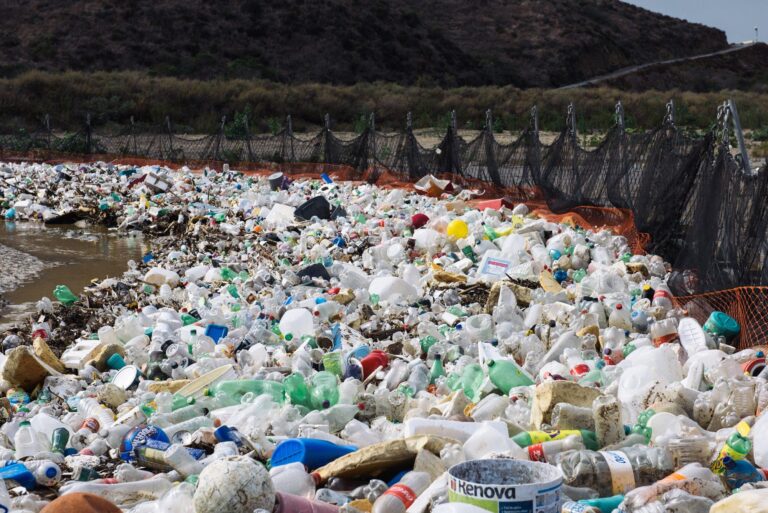The United States and Mexico have reached a significant agreement aimed at addressing the long-standing sewage contamination crisis affecting the Tijuana River, a persistent environmental and public health challenge that has plagued the border region for decades. Officials from both nations outlined a series of coordinated measures designed to reduce pollution, improve water quality, and enhance cross-border collaboration. This development marks a pivotal step toward resolving a complex binational issue that has impacted communities on both sides of the border and strained diplomatic relations.
U.S. and Mexico Commit to Joint Action on Tijuana River Sewage Cleanup
The U.S. and Mexico have announced a historic agreement to tackle the persistent sewage pollution affecting the Tijuana River Valley, a problem that has plagued border communities for decades. This joint action plan emphasizes enhanced binational cooperation, infrastructure upgrades, and consistent funding to prevent untreated sewage from crossing the border and contaminating water sources. Key measures include the installation of advanced wastewater treatment facilities and the deployment of real-time water quality monitoring systems to ensure swift responses to future spills.
Under the agreement, both countries will prioritize:
- Accelerated construction of sewage containment and treatment infrastructure
- Regular cross-border environmental data sharing
- Community engagement initiatives focused on health education and ecosystem restoration
This collaborative approach marks a significant step forward in addressing environmental and public health concerns linked to cross-border water pollution.
| Key Component | U.S. Contribution | Mexico Contribution |
|---|---|---|
| Infrastructure Upgrade | Funding for main treatment plants | Construction and maintenance of sewage systems |
| Monitoring & Data Sharing | Deployment of sensors & data platforms | Real-time pollution oversight |
| Community Engagement | Health and environmental education campaigns | Local outreach and restoration projects |
Environmental Impact and Health Risks Prompt Urgent Binational Response
The ongoing sewage discharge into the Tijuana River has long presented serious environmental challenges, severely damaging marine ecosystems and threatening the health of nearby communities on both sides of the border. Chronic exposure to polluted water has been linked to increased risks of respiratory infections, skin diseases, and gastrointestinal illnesses among residents. Recognizing the critical urgency, authorities from the United States and Mexico have committed to a coordinated response focusing on sustainable infrastructure improvements and enhanced water quality monitoring systems.
Key elements of the binational strategy include:
- Upgrading wastewater treatment facilities to reduce harmful contaminants
- Implementing real-time water quality tracking to provide timely public health alerts
- Joint clean-up initiatives aimed at restoring natural habitats
- Community engagement programs to raise awareness and improve sanitation practices
| Impact Category | Effect | Planned Action |
|---|---|---|
| Water Quality | High levels of pathogens | Advanced filtration systems |
| Public Health | Rising disease incidence | Community health monitoring |
| Wildlife | Habitat degradation | Restoration and protection zones |
Funding and Infrastructure Plans Announced to Address Wastewater Management
In a groundbreaking move to tackle the persistent sewage discharge into the Tijuana River, the U.S. and Mexico governments have unveiled a comprehensive funding package aimed at significant upgrades to wastewater treatment facilities along the border. This initiative includes a multi-million dollar commitment from both federal and state agencies, signaling a long-term approach to reduce pollution levels and mitigate the health hazards impacting communities on both sides.
The plan emphasizes strategic infrastructure improvements with a focus on:
- Enhanced treatment plant capacity to manage fluctuating wastewater volumes during seasonal flows.
- Cross-border pipeline repairs and expansions ensuring secure and efficient sewage transport.
- Installation of advanced monitoring systems to provide real-time data and rapid response capabilities to contamination events.
| Funding Source | Allocated Amount (USD) | Primary Use |
|---|---|---|
| U.S. Federal Environment Grants | $120 million | Upgrade treatment plants & technology |
| Mexican National Infrastructure Fund | $85 million | Sewer pipeline expansion & repairs |
| Binational Water Commission | $30 million | Cross-border coordination & monitoring |
Community Engagement and Long-Term Monitoring Crucial for Sustainable Solutions
Addressing the Tijuana River sewage crisis requires more than just infrastructure upgrades; it demands active community involvement and consistent oversight. Local residents, environmental groups, and municipal authorities must collaborate to ensure that remediation efforts reflect the needs and concerns of those most affected. Grassroots participation fosters transparency and accountability, making it easier to identify emerging issues early and adapt solutions accordingly. This inclusive approach not only enhances trust but also encourages stewardship of shared natural resources.
Long-term monitoring programs are equally essential to track progress and maintain environmental standards over time. Utilizing modern technologies such as remote sensors, water quality testing, and real-time data reporting enables stakeholders to evaluate the effectiveness of interventions continuously. Below is a summary table illustrating key monitoring components crucial for sustainable management:
| Monitoring Aspect | Purpose | Frequency |
|---|---|---|
| Water Quality Analysis | Assess pollutant levels and health risks | Monthly |
| Sewage Overflow Tracking | Detect system failures promptly | Real-time |
| Community Feedback Collection | Gauge public perception and concerns | Quarterly |
- Empowered communities become co-managers of local water resources.
- Continuous data enables proactive problem-solving rather than reactive fixes.
- Cross-border coordination is critical for a binational watershed that knows no boundaries.
Concluding Remarks
The agreement between the United States and Mexico marks a significant step forward in addressing the long-standing sewage crisis plaguing the Tijuana River. While challenges remain, the collaborative efforts signal a renewed commitment to protecting the environment and public health in the border region. Continued cooperation and sustained investment will be crucial to ensure lasting solutions and improved quality of life for communities on both sides of the border.







